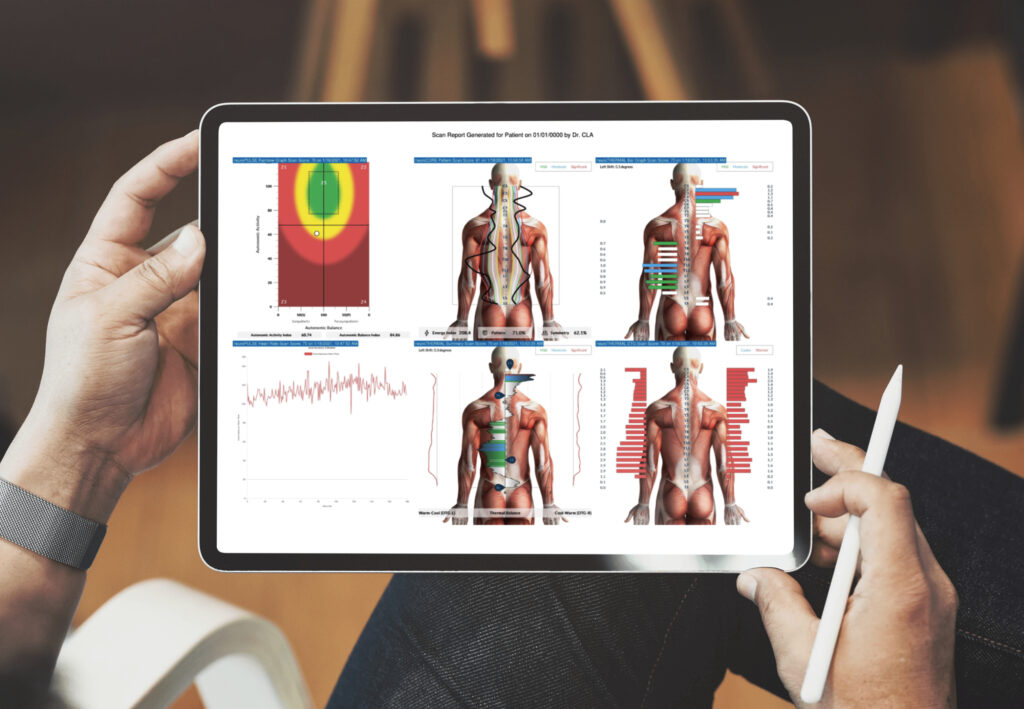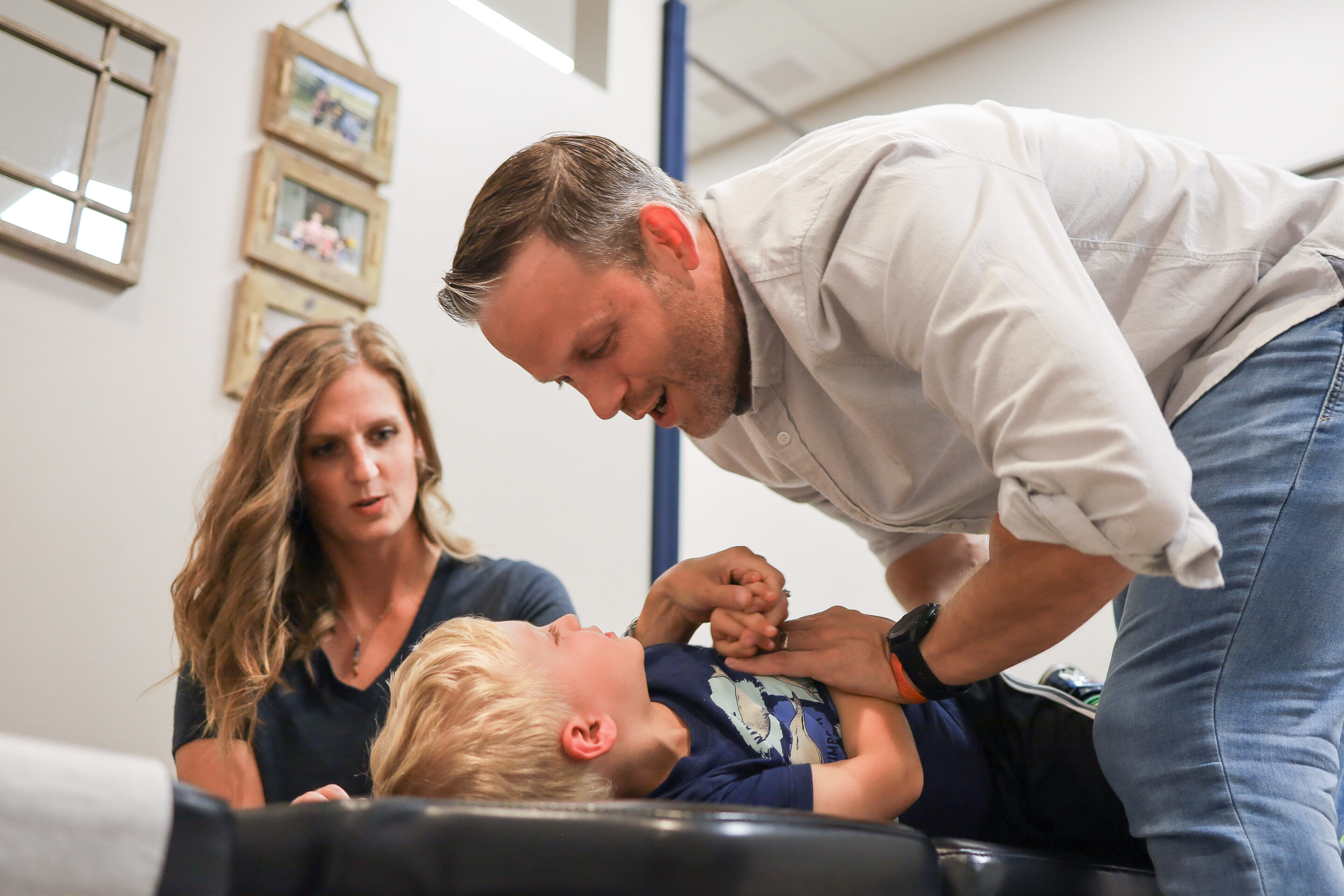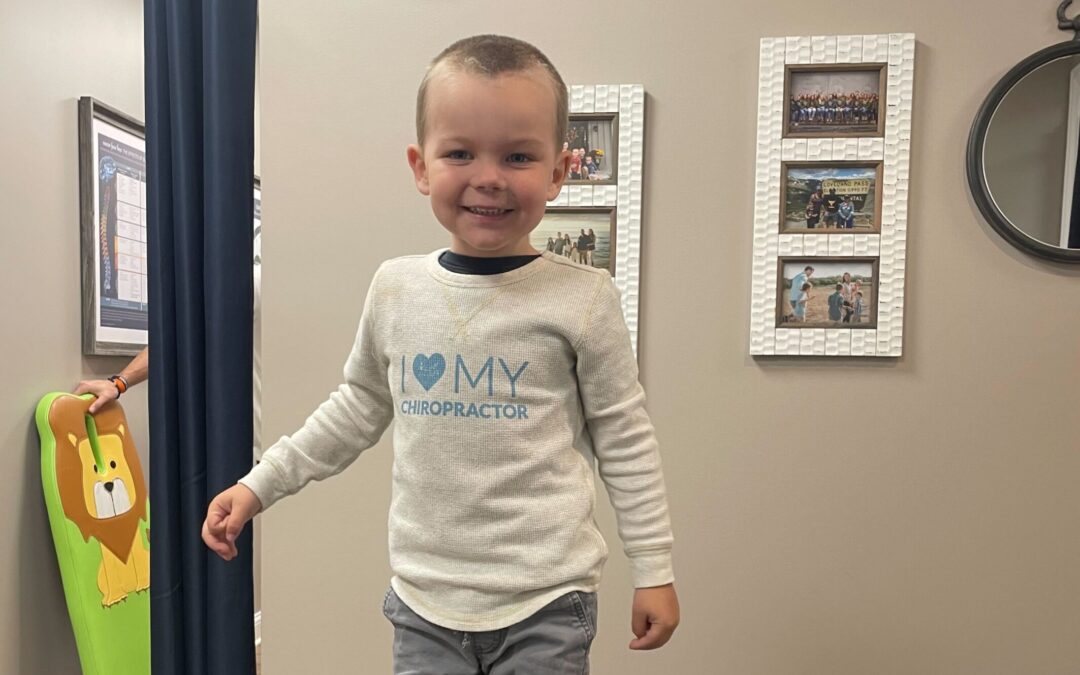The human body is a complex and highly organized system, and at the center of all these functions is the nervous system. This remarkable system plays a crucial role in our daily lives, regulating everything from our heartbeat and breathing to our thoughts and emotions – it is air traffic control of all the other major bodily systems.
One of the key components of the nervous system is the sympathetic nervous system (SNS), which is responsible for the body’s rapid response to various situations. Your sympathetic nervous system kicks into gear when you’re stressed, in danger, or doing something physical. It makes your heart beat faster, helps you breathe better, sharpens your vision, and puts the brakes on things like digestion.
As Pediatric Neurologically-Focused Chiropractors, our expertise is the autonomic nervous system, and we are always focusing on the sympathetic nervous system, its functions, and its impact on developing children.
What is the Sympathetic Nervous System?
The sympathetic nervous system is an integral part of the autonomic nervous system, which controls involuntary bodily functions. Unlike the voluntary nervous system that governs conscious movements, the autonomic nervous system operates without our conscious control, ensuring that our internal functions continue to work smoothly.
The SNS is often referred to as the “fight or flight” system because it prepares the body to respond swiftly to potential threats or stressful situations. When activated, it triggers a cascade of physiological responses, such as an increased heart rate, dilated pupils, and redirected blood flow to the muscles. These changes are aimed at helping the body deal with emergencies effectively and efficiently.
The parasympathetic system, on the other hand, complements the sympathetic nervous system by promoting relaxation, regulation, and recovery. These two systems work together to maintain the body’s internal equilibrium, ensuring that we can quickly respond to danger while also allowing our bodies to rest and recover during less stressful times.
Functions and Effects of the Sympathetic Nervous System
What Does the Sympathetic Nervous System Do?
The sympathetic nervous system greatly influences various organs and systems within the body. It stimulates the heart to beat faster, increases alertness, and initiates the release of glucose to provide quick energy for muscles. It also dilates the bronchial passages, improving oxygen uptake. These responses collectively prepare the body to handle stress and danger effectively.
The Sympathetic Nervous System’s Role in “Fight or Flight”
The “fight or flight” response is a fundamental survival mechanism hardwired into our biology that our ancestors relied on to deal with immediate threats or danger. When your brain perceives a threat, it signals your sympathetic nervous system to prepare your body for action and activates an immediate response. It readies the body to either confront the danger head-on or flee from it.
This activation involves the release of stress hormones like adrenaline and cortisol, which triggers a series of physiological changes designed to help you respond effectively. Heart rate increases to pump more oxygen-rich blood to the muscles, pupils dilate to enhance vision, and blood flow is diverted away from non-essential functions like digestion and redirected toward the muscles.
Sympathetic vs. Parasympathetic Nervous System
What is the Difference Between Parasympathetic and Sympathetic?
As mentioned, the sympathetic nervous and parasympathetic nervous systems have distinct roles and functions that complement each other when the autonomic nervous system is operating at its full potential. While the SNS prepares the body for action and takes the lead for as long as is necessary to get you through a period of danger, the parasympathetic nervous system then steps in to help the body recover, return to normal, and rest.
How They Affect a Child’s Daily Life
In a child’s daily life, both the sympathetic and parasympathetic systems play crucial roles. They come into play in various real-life scenarios. For instance, when a child faces a challenging or high-stress situation, such as a conflict at school or a playoff basketball game, the sympathetic system gears them up to meet it head-on.
The parasympathetic system is then supposed to help them calm down and recover once the stressor is removed, help the child digest their food, control and regulate inflammation and immune responses, and also kick in at bedtime when their body is preparing for sleep.
We also would look for the child to rely more on their parasympathetic system when in learning and development mode, which is why an imbalance between the sympathetic and parasympathetic system (a condition known as dysautonomia) is such a major factor in developmental delays, learning disabilities, as well as other behavioral or emotional dysregulation challenges in children.
Balancing these two systems is essential for children’s overall well-being and development, ensuring they can respond to challenges while maintaining a state of relaxation when not under stress.
So what happens when the sympathetic and parasympathetic systems are not functioning properly or balancing each other out? This is something called dysautonomia or nervous system dysregulation, a condition that disrupts the balance between this vital system. This can, in turn, present a whole host of challenges for a child.
The number one most overlooked and unknown trigger of an overactive sympathetic nervous system is something called subluxation. Subluxation refers to misalignment, tension, and imbalance built up or stuck within the nervous system. Over time, this tension disrupts the balance of the autonomic nervous system, leading to dysautonomia. These subluxations interfere with communication between the brain and the rest of the body, including the organs and tissues involved in the stress response.
Dysautonomia can lead to a range of issues for our children, including physical problems like neck pain and headaches, physiological issues such as sleep and gut disorders, and cognitive challenges like emotional or behavioral. When the nervous system is dysregulated, it struggles to return to a state of balance after reacting to stimuli. This can result from factors like birth trauma, physical injuries, chronic stress, toxins, or inflammation – factors that are all a part of a kid’s lives today.
The primary nerve responsible for the parasympathetic side of the nervous system is the Vagus Nerve, and it is often injured or damaged during the birth process, especially when interventions such as c-section, forceps, vacuum, or induction occur.
Overlooked and dismissed birth trauma is frequently seen in children struggling with anxiety, ADHD, Sensory Processing Disorder, and neurodevelopmental challenges – all of which fall under the umbrella of nervous system dysregulation.
How to Care For Nervous System Dysregulation: Subluxation, Dysautonomia, and the Vagus Nerve
As Neurologically-Focused Chiropractors, we have a way of measuring and detecting this dysfunction – that begins with one crucial step: getting your child into a PX Doc office to have Neurological INSiGHT scans performed.
Neurologically-Focused Chiropractic care is impossible without the information INSiGHT scans provide. These scans, along with their invaluable “neuro-metrics,” empower our PX Docs to offer precise, tailored, and personalized care to patients of all ages.
These scans can do three (3) things no other assessment can come close to:
- Detect subluxation, dysautonomia, and nervous system dysregulation
- Quantify and measure the amount (severity) of dysregulation
- Locate and target the exact subluxation patterns disrupting neurological communication and function

When the nervous system remains in a prolonged state of sympathetic overdrive, it prompts the adrenal glands and other hormone-related structures to release neurotransmitters and signals that induce feelings of distress continuously. This heightened state of anxiety and distress, in turn, amplifies the sympathetic response, creating a self-perpetuating neurological cycle known as the “Perfect Storm.”
The Importance of the Sympathetic Nervous System
Impact on Health and Well-Being
As we now know, the sympathetic nervous system is an integral part of the autonomic nervous system, which prepares the body to respond rapidly to threats and stressors. Understanding its role in the “fight or flight” response and its partnership with the parasympathetic system is essential for maintaining balance in a child’s life.
Hence, when dysautonomia and dysregulation plague the nervous system, affecting the operation of the sympathetic nervous system, the quality of a child’s life can rapidly deteriorate. Our distinctive approach as Neurologically-Focused Chiropractors does not aim to treat or cure any condition but instead confronts the root causes, addressing subluxation, dysautonomia, and Vagus Nerve dysfunction directly.
Our simple, gentle adjustments restore optimal function and balance to the nervous system, improving integration and communication between all branches of the nervous system, but especially the central and autonomic nervous system – as well as the Vagus Nerve, which is by far the most important nerve in the body when it comes to regulation of the nervous system.
Initial reports of improvements children have experienced after beginning chiropractic care manifest in various ways, such as improved sleep quality, fewer sensory issues, improved gut and immune health, enhanced emotional stability, improved focus and concentration, and so much more.
If you are ready to take control and ensure your child’s nervous system is functioning at its full potential, now is the time to reach out to a Neurologically-Focused Chiropractor in our PX Docs network. Check out our directory to find a PX Doc local to you. Recognizing the importance of the function of the sympathetic nervous system and its impact on health can help parents ensure that children have the best opportunity to thrive in a balanced and healthy way!





